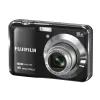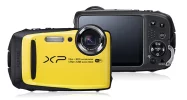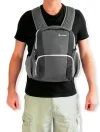SaraB
Member
- Time of past OR future Camino
- Camino Portugues (April 2016)
Camino Ingles (April 2017)
I'm getting ready for my first camino (Portugues, this April).
I feel like it is going to be an unforgettable experience, and I am hoping and expecting to see some truly amazing sights. I quite like taking photographs, and of course I want to have some memories of my pilgrimage. So here's the dilemma. I have a professional camera, a Nikon, that takes stunning pictures but of course it is quite heavy and I'm very concerned about carrying all that weight with me. Plus, the hassle of getting it out of its case to take pictures, etc...
On the other hand, my phone is quite old and the camera is really poor quality.
Bearing in mind that my phone is already outdated, so I know I will have to replace it with a new one (with a better camera) in the next couple of years, I am thinking: is it worth investing the money for a better phone now and use that as camera? In this case, though, I would be a bit worried about carrying an expensive phone with me.
Any advice? What did other pilgrims do to take stunning photographs?
I feel like it is going to be an unforgettable experience, and I am hoping and expecting to see some truly amazing sights. I quite like taking photographs, and of course I want to have some memories of my pilgrimage. So here's the dilemma. I have a professional camera, a Nikon, that takes stunning pictures but of course it is quite heavy and I'm very concerned about carrying all that weight with me. Plus, the hassle of getting it out of its case to take pictures, etc...
On the other hand, my phone is quite old and the camera is really poor quality.
Bearing in mind that my phone is already outdated, so I know I will have to replace it with a new one (with a better camera) in the next couple of years, I am thinking: is it worth investing the money for a better phone now and use that as camera? In this case, though, I would be a bit worried about carrying an expensive phone with me.
Any advice? What did other pilgrims do to take stunning photographs?























